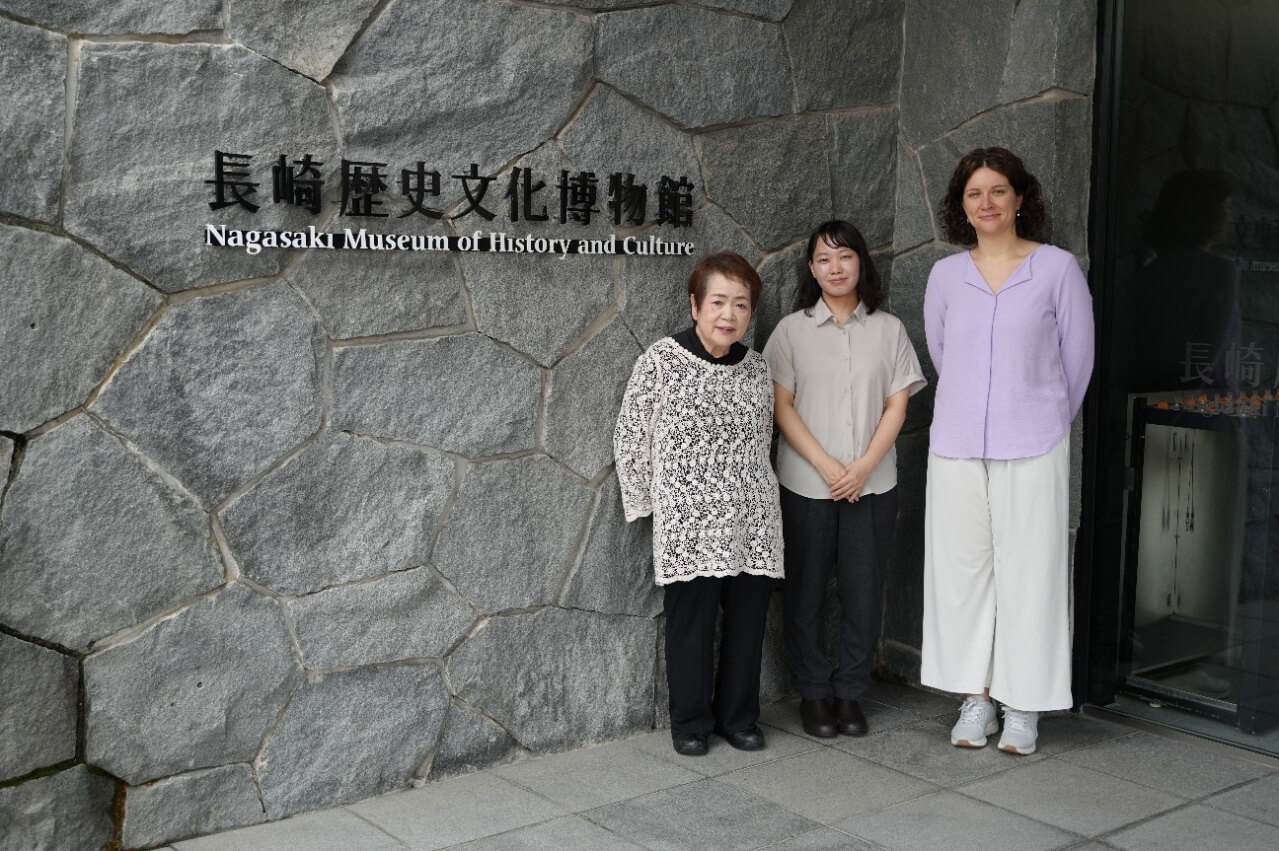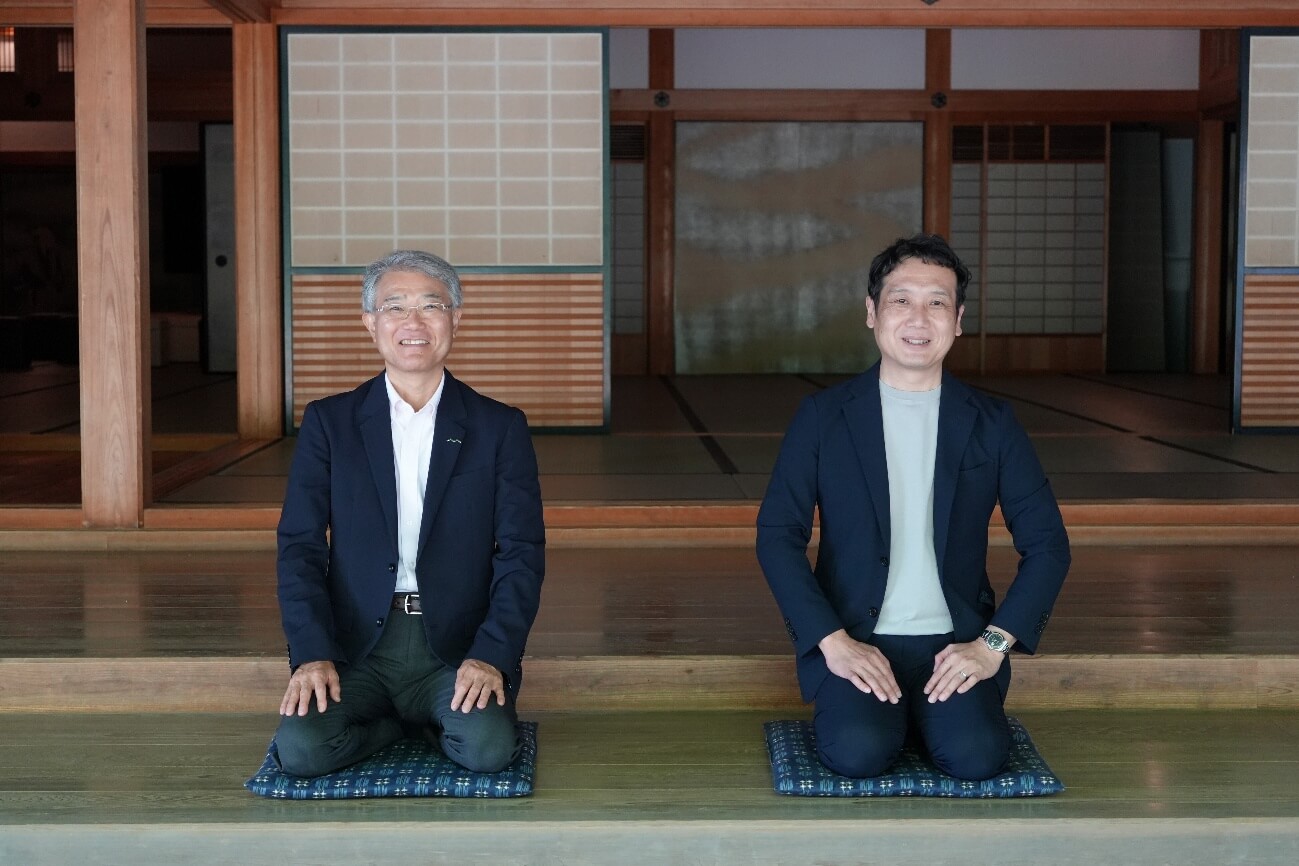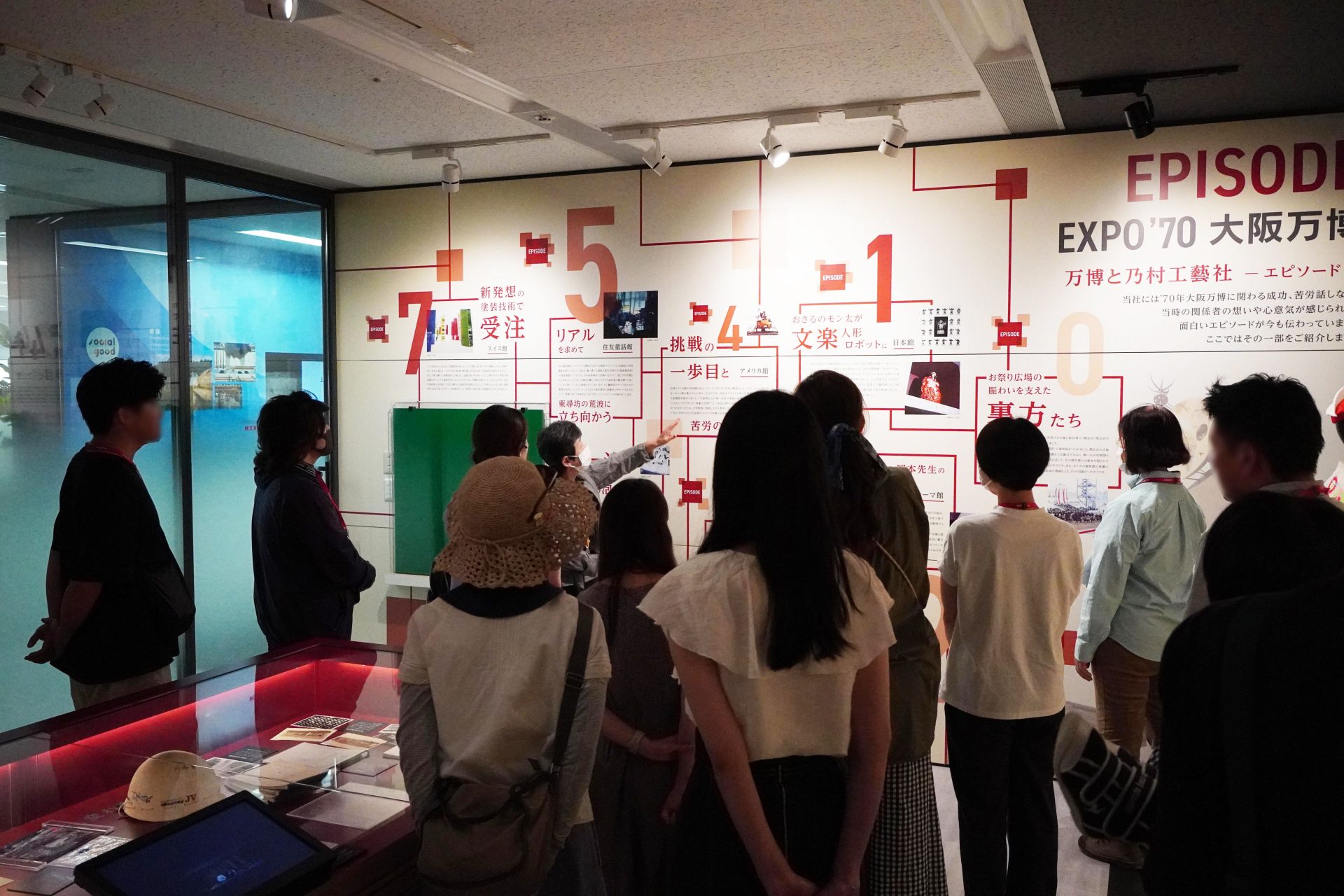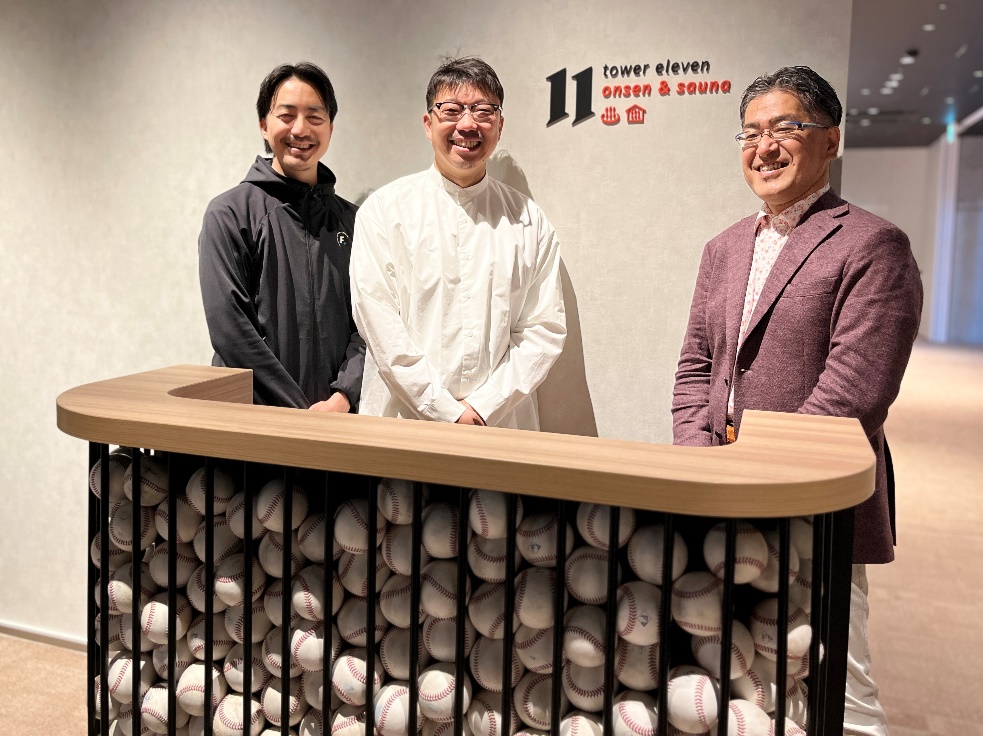
- text and edit by
- Kenta Masubuchi
The so-called "sacred place"
What do you think of when you hear the word pilgrimage to sacred places?
What comes to mind is Jerusalem for Christianity, Mecca for Islam, Ganges River for Hinduism, and so on.
Japan also has a long tradition of pilgrimage to Ise and Shikoku 88 sacred sites.
Although we are not usually conscious of it, modern Japanese people tend to rely on God and Buddha at weddings, funerals, and before exams.
What is the “sacred place” for us now?
I will try to search by entering "pilgrimage to sacred places" on the search site. result and how.
From the answer, the top places are all places that have become the stage of otaku content works such as "anime, manga, and games".
Sorry for the late greeting. I'm Masubuchi, a planner at NOMURA Co., Ltd., who loves anime, manga, and games.
This time, I would like to think about the "pilgrimage to sacred places" in otaku-related content, which is important not only for otaku in Japan but also for otaku overseas.
 ↑By the way, Masubuchi has been interested in manga and illustrations since he was a child, and during his time at Tokyo University of the Arts, he even made human figures for model decorations.
↑By the way, Masubuchi has been interested in manga and illustrations since he was a child, and during his time at Tokyo University of the Arts, he even made human figures for model decorations.
Pilgrimage to sacred places in modern Japan
What is a “pilgrimage to sacred places”?
Needless to say, the influence of Japanese anime, manga, and games has become an important culture for Japan today. In recent years, it has entered the framework of Cool Japan and has become a national culture, and I feel that it can no longer be called a subculture.
Anime, manga, and games are basically media, a kind of virtual reality that unfolds on screens and magazines. Just because it depicts a wonderful world view, the immersive feeling cannot be underestimated, and there are probably many otaku who dream of living in the other world. I am one of them (laughs).
There are many patterns that bring such a virtual reality world into reality.
For example, around Sakaiminato Station in Tottori, there is a place called Mizuki Shigeru Road, where 177 yokai characters line up to create a world of manga.
Weird things include mourning the deaths of famous rival characters such as Toru Rikiishi from Ashita no Joe and Raoh from Fist of the North Star, and actually holding funerals in the real world.
One of them is "pilgrimage to sacred places".
A simple explanation of the "pilgrimage to sacred places" here is that anime, manga, and game fans call things that are closely related to the works in the real world, such as the land and buildings that became the stage of the work, "sacred places." , It is to actually carry your feet. It can be said to be a kind of content tourism.
In terms of recent famous places, "Your name is. Hida Takayama and Yotsuya, which were used as filming locations for . In the past work, it appeared in the opening scene of "Slam Dunk", so many fans still visit the railroad crossing at Enoden Kamakurakokomae Station, both domestically and internationally.
For those who don't get it, it would be nice if you could think of it as a Tora-san fan going to Shibamata Taishakuten.
The current state of "pilgrimage to sacred places"
In fact, this "sacred place pilgrimage" is now developing into a national project.
In response to domestic and international demand, the Cabinet Office and the Japan Tourism Agency have recognized this culture as part of the Cool Japan strategy as "anime tourism." Since 2016, it is a theme that has received support as a project to attract tourists to local areas through theme-based tourism.
Various activities are being carried out under the organization of the above "General Incorporated Association Anime Tourism Association".
Mainly titled "Anime Tourism 88", it seems that they are proposing a trip around 88 "sacred places" in various parts of Japan that are selected each year. You can collect stamps called "goshuin" by visiting the 88 temples of Shikoku.

MAP poster of anime tourism 88
(Source: https://www.city.mutsu.lg.jp/images/content/62867/20170831-190111.jpg)
0 Fudasho = The starting point is located inside Narita Airport, so it seems to be a strong attraction for inbound tourists, and it seems to function as part of a regional revitalization project that will also lead to sending customers to rural areas.
This kind of public-private cooperation type policy is a new movement when you think about the "pilgrimage to sacred places" so far.
In recent years, we have seen some cases of collaboration with local governments that have “sacred places”.
History of "Sacred Land Pilgrimage"
The culture of pilgrimage that has grown to this point seems to have originated spontaneously from the exchange of information between anime and manga fans in communities such as bulletin boards and sites on the web.
Tracing its history back to the 1990s, there were already pilgrimage activities, such as the Azabu Juban area and Hikawa Shrine in Sailor Moon, as well as Tenchi Muyo! ” was a pilgrimage to Taoi Shrine in Okayama Prefecture.
By the way, there is also a theory that it came to be called ``sacred place pilgrimage'' because there were relatively many ``shrines'' at the time of pilgrimage.
Washinomiya Shrine in Saitama Prefecture, the stage of the 2007 anime Lucky Star, is indispensable when talking about pilgrimage to sacred places. This was set as the family home of the characters in the work, the Hiiragi sisters.
The culture of Moe Ema, which fans draw using illustrations, has been widely featured in the media, and has grown into a place that can be said to be a Mecca for pilgrimages where many fans gather.
Nearly 12 years have passed since the end of the broadcast, and it seems that many domestic and overseas fans are still visiting.
According to the Development Bank of Japan's trial calculation, the economic ripple effect in the 10 years since the broadcast was over 3.1 billion yen, and you can feel the vitality from the numbers.
(Source: https://honichi.com/news/2018/03/26/seichijunrei/#section-3)
"Sacred place pilgrimage" basically starts with the individual actions of fans, but there are increasing cases where it develops while involving the local government and the government.
In Oarai City, Ibaraki Prefecture, which is the sacred place of "Girls und Panzer", the local festival "Ankou Matsuri" was originally a TV broadcast, and since 2012, it has collaborated with "Girls und Panzer" and invited voice actors and others to talk shows. and various contents were developed.
And in 2017, the 6th year of collaboration, it has grown into a big event visited by 130,000 people.
This is an example that is also attracting attention in terms of regional revitalization.
Our company also has contacts in events, exhibitions, museums, etc. related to anime, manga, and games, so we would like to be involved in these fields as well.
"Pilgrimage to sacred places" by Masubuchi
Masubuchi has also made several pilgrimages to sacred places.
This time, I will introduce the story of when I went to Tanegashima, Kagoshima Prefecture, which was the most severe "pilgrimage".
By the way, the reason why it was tough was that I planned to ride a 250cc motorcycle in two days, about 1,700km one way from Tokyo. And it was the end of January...

A photo taken in Minamitanegashima. Together with the HONDA VT250 Spada, which is full of camping equipment.
“Pilgrimage to sacred places” in Tanegashima
In Tanegashima, it is a sacred place for two works.
One is the animated movie "5 Centimeters Per Second" directed by Makoto Shinkai. The second chapter, Cosmonaut, was set in Tanegashima.
The other is Robotics;Notes, a Nitro+ game and anime.
Tanegashima is popular for rocket launches and the Tanegashima Space Center, but perhaps because of the gradual popularity of pilgrimages to sacred places, the town hall in Naka-Tanegashima has created a pilgrimage map.
● Tanegashima Pilgrimage Map of Nakatanegashima Town
The real pleasure of "pilgrimage to sacred places"
A pilgrimage to sacred places is a very mysterious thing, and the destinations are not only famous places, but rather ordinary local facilities and places that are not so unusual.
And when I go to such a place, the excitement level is high.

– Chiza no Iwaya. It was a very nice space, so I remember sitting and looking at it for a long time regardless of the sacred place.
For example, this Chiza no Iwaya that appeared in "Robotics; Notes".
It is also a tourist attraction in Tanegashima.
Of course, I was deeply touched by the beauty of this form created by nature over time and the expanse of space that seemed to disappear beyond the sea.
However, this place doesn't appear that much in the work, so it struck a chord with me as a fan of the work.

– Uchugaoka Park, which often appeared in the work. Photo left: Observation deck Photo right: Antenna dome like a radio tower
Next is Uchugaoka Park, a relatively ordinary local park.
If someone who does not know the work sees this park, they will think, "What is interesting?" However, in such a park, Masubuchi's pilgrimage fever reaches its maximum...!
Many characters such as the hero and heroine often visit here, and it was drawn as a very important place in the work. So, you can (arbitrarily) feel the traces of various characters in Uchugaoka Park.
If you go up to the observatory, you will be able to get inside the work, such as "I wonder if Airi was standing on this railing..." or "I'm looking at the scenery that Kaito saw at that time...!" It feels like you are reliving it.
In addition, I found many places such as the local museum and the radio tower standing on it, the athletic group that appeared in the ending, and so on. And think about each place.
These are, so to speak, "points of contact" that connect the real world and the world of works, and are like gates to the other side of the world.
Yes, this is exactly the heart of the “pilgrimage to sacred places”.
Although this is my personal opinion, I believe that the biggest need for "pilgrimage to sacred places" is "I want to go to the world in the works".
When you watch a work, you encounter its world view, story, and characters, and you have a strong admiration for the world of the work, and you can't help but go on a journey.
With that in mind, this park, a place that takes you to the fascinating world of the work, or a "gateway to another world", is truly a "sacred place."
By the way, Masubuchi wanted to stay in such a “sacred place” for as long as possible, so in the end he decided to camp at Uchugaoka Park. (Because camping is OK.)
It was cold.
And the next day, before returning from Tanegashima, I saw a rocket launch from this park. This time, I also think about the world of "5 centimeters per second".
In this way, the purpose of "pilgrimage to sacred places" was achieved, but honestly, the best training was the return trip to Tokyo.

– Rocket launch seen from Uchugaoka Park. Great power even from a distance.
What do you think when you look back on your pilgrimage to sacred places?
After actually experiencing it, I felt that I was able to find the reason why the culture of "pilgrimage to sacred places", which is both a fan activity and a trip, developed.
Yearning for the “Unknown World”
I believe that one of the main reasons is that there are many things in common between what people want from travel and what they want from anime/manga/games.
The biggest thing is the "extraordinary experience" or "experience of a world that you do not know".
I've heard that in the millions of years of human history, people started to settle down very recently.
Perhaps the DNA level is not used to the fact that the environment does not change.
If you continue to live the same life, you will yearn for a different environment than now, saying, "I want to go somewhere."
I think that such desires can be satisfied by, for example, traveling or experiencing the world of works through anime, manga, and games.
In recent years, there has been a decline in “mass tourism,” which focuses on fixed routes and fixed locations, while “new tourism,” which is based on strong themes and experiences tailored to individual interests, is growing.
This is very close to the essence of "pilgrimage to sacred places", and it can be said that "pilgrimage to sacred places" is close to the needs of the present age.
Tourism in Japan, which is expected to revitalize due to next year's Tokyo 2020 Olympics and Paralympics, and the associated pilgrimage to sacred places.
It seems that it will become a theme that cannot be overlooked more and more in the future.
*please note*
The information on the websites linked to in this article is current as of the time this page was created.
Please note that it is subject to change.
Like this article?















